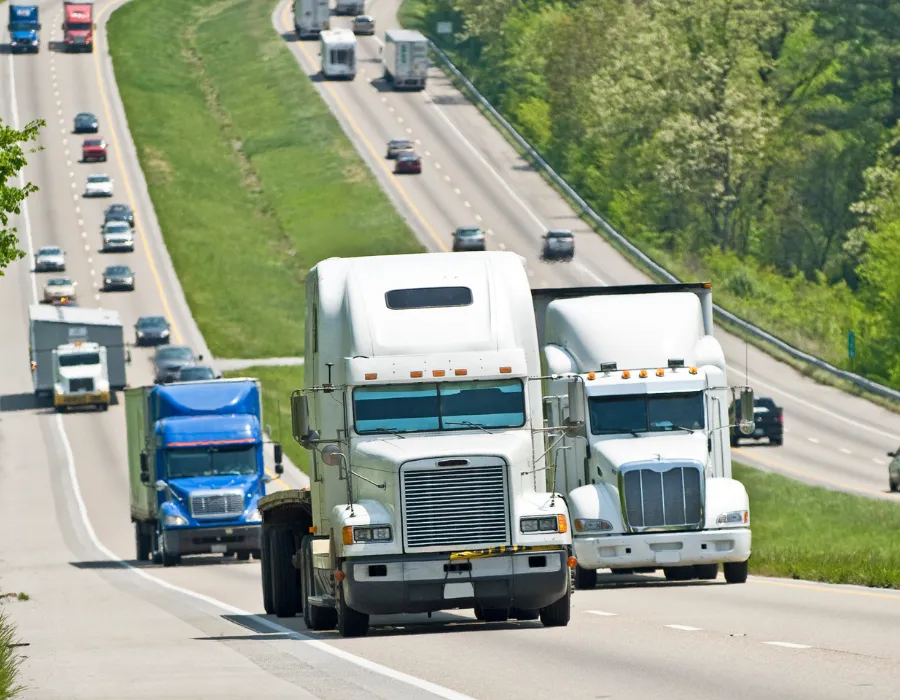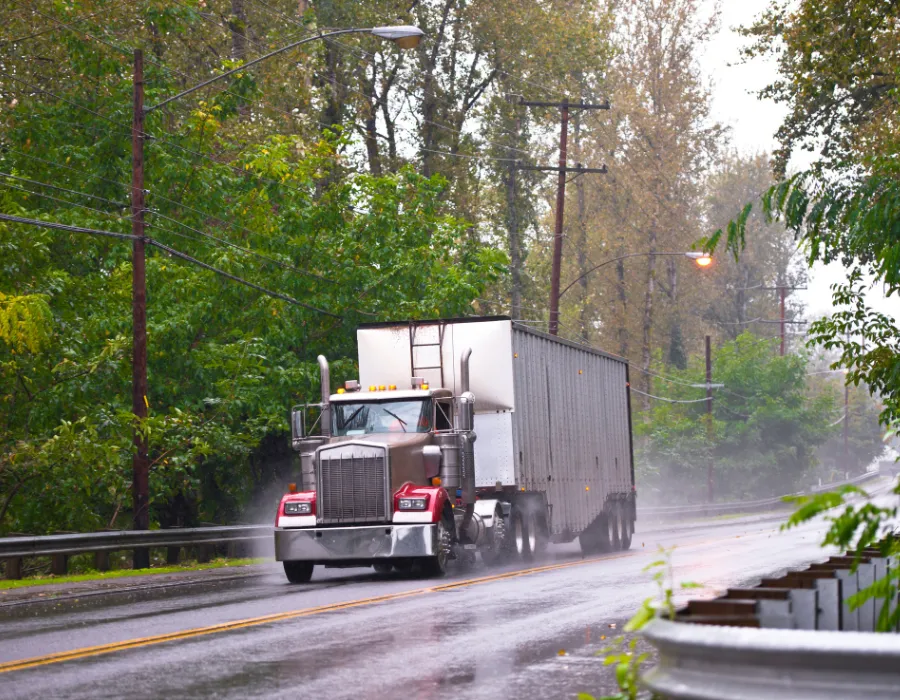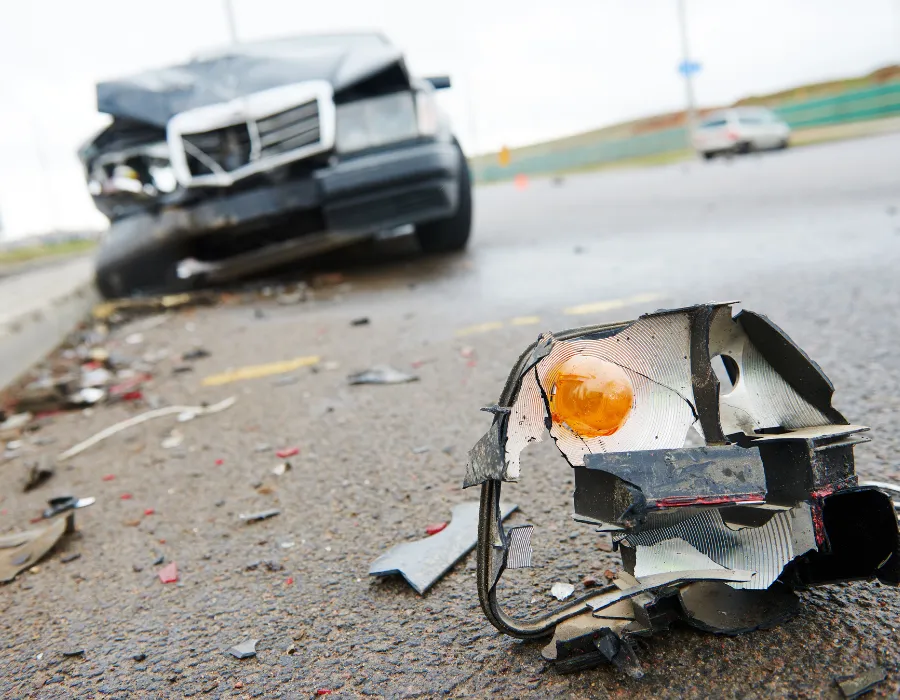The Difference Between Driving a Big Rig Truck vs. Driving a Car

Cars and big rigs may both be forms of transportation on our roads, but driving them is a completely different experience.
With their massive size and weight, big rigs present a unique set of challenges for drivers. These challenges impact everything from how the vehicle handles to how far it takes to stop.
Understanding these key differences is crucial for both truck drivers and those who share the road with them. By exploring the specific aspects that set these vehicles apart, we can all navigate the roads with greater awareness and safety.
What is a Big Rig Truck?
Many people are familiar with various passenger vehicles on the road, from sedans and SUVs to pickup trucks. But what about those massive tractor-trailer combinations we often see hauling freight across highways? These giants, commonly referred to as “big rigs,” play a vital role in our economy, transporting goods of all shapes and sizes.
These vehicles are large trucks with a connected trailer specifically designed for hauling cargo. Unlike passenger vehicles built for transporting people, these vehicles are the workhorses of the commercial transportation industry.
Travel down any major interstate, like I-10, and you’re bound to see these giants carrying everything imaginable – from fresh produce for our grocery stores to hazardous materials.
Qualifications and Training for Big Rig Operators

Getting a commercial truck driver’s license is more involved than getting a regular driver’s license. Truck drivers must pass specific tests and training to ensure they have the skills to safely operate large vehicles on the road.
Commercial Driver’s License (CDL) is Mandatory
Driving a commercial truck requires a special license – a Commercial Driver’s License (CDL). Unlike a regular driver’s license, the CDL involves a stricter testing process to ensure you have the skills and knowledge to safely operate these powerful vehicles.
Specialized Training for Specific Cargo
Depending on the type of cargo you haul, you might need additional qualifications beyond the CDL. For example, transporting hazardous materials requires a special endorsement obtained through further training and testing.
Key Differences in Driving a Big Rig Compared to a Car
Another reason why there are more qualifications to operate a big rig is driving one of these massive vehicles is much more difficult because of the following:
Size and Weight
These commercial vehicles are much heavier than cars. A typical car weighs around 4,000 pounds, while a big rig can weigh up to 80,000 pounds – that’s twenty times more! This extra weight makes them trickier to handle:
- Stopping Takes Longer: They need more space to stop compared to cars. Always leave plenty of following distance when behind a big rig so you have time to react if they brake suddenly.
- Turning Can Be Tough: They can be harder to turn, especially on hills or curves. This is because of their weight distribution. There’s also a higher risk of rollovers on uneven terrain or sharp turns.
Handling and Maneuvering

Big rigs are not just heavy, they’re also much bigger than cars. Their trailers can stretch over 53 feet, and some rigs even pull double trailers. This large size means they take up a lot of space on the road, which creates challenges like:
- Wide Turns: Turning can be difficult due to the length of the trailer and the overall size of the vehicle.
- Higher Center of Gravity: Unlike cars, big rigs sit higher off the ground. This makes them more likely to tip over during sharp turns or sudden movements.
Blind Spots
One of the biggest safety challenges with big rigs is their blind spots, also called “no-zones.” These are areas around the truck where the driver has limited visibility, particularly on the sides, front, and back.
- According to the Federal Motor Carrier Safety Administration (FMCSA), almost half (46%) of truck accidents involve cars in these blind spots.
To stay safe, it’s important to be aware of these no-zones and avoid spending too much time next to them while driving.
Accidents and Safety: Understanding the Risks of Large Trucks on the Road

Despite the qualifications and regulations set in place, the difficulty of operating a large truck means that commercial trucking accidents still happen even when the most experienced drivers are behind the wheel.
Semi-Truck vs Car Accident Statistics
According to the National Safety Council, large trucks cause a disproportionately high number of road fatalities, even though they make up a smaller percentage of vehicles. This is often due to the significant size and weight difference between commercial trucks and cars.
Commercial Trucking Regulations
Driver qualifications also play a critical role in accident prevention. When investigating a truck accident, our team understands the importance of scrutinizing the driver’s record and qualifications.
The Federal Motor Carrier Safety Administration (FMCSA) imposes strict regulations on commercial drivers, exceeding those for passenger vehicle operators.
- These regulations cover a wide range of safety measures, including limitations on driving hours, restrictions on driving under the influence of alcohol or drugs, and even prohibitions on using electronic devices while operating the vehicle.
A thorough understanding of these regulations and their potential impact on a trucking accident case is crucial in achieving a just outcome.
Consult with Gordon McKernan Personal Injury Attorneys After a Big Rig Accident
The aftermath of any car accident can be a lot to handle, but the stakes are significantly higher when a big rig is involved. These massive vehicles can cause catastrophic injuries and property damage, leaving victims with complex legal challenges.
You’ll need the help of a trustworthy big rig lawyer in Louisiana who fully understands the distinction between a standard car accident and a big rig accident when seeking compensation. Here’s why:
- Severity of Injuries: These accidents often result in far more severe injuries due to the sheer size and weight of the vehicles involved. This can significantly impact your medical bills, lost wages, and overall well-being.
- Complex Insurance Issues: Truck insurance policies are often much more intricate than standard car insurance. Our Louisiana big rig accident lawyers have extensive experience dealing with these complexities, ensuring you receive the maximum compensation you deserve.

Don’t navigate the legal complexities of an accident alone and turn to our team at Gordon McKernan Personal Injury Attorneys who understands the unique challenges you face. We can help you understand your rights, explore all legal options, and fight for the compensation you deserve.
Schedule a free consultation today to discuss your case with our Louisiana truck accident attorneys.

